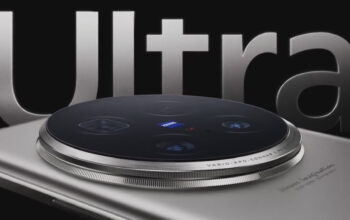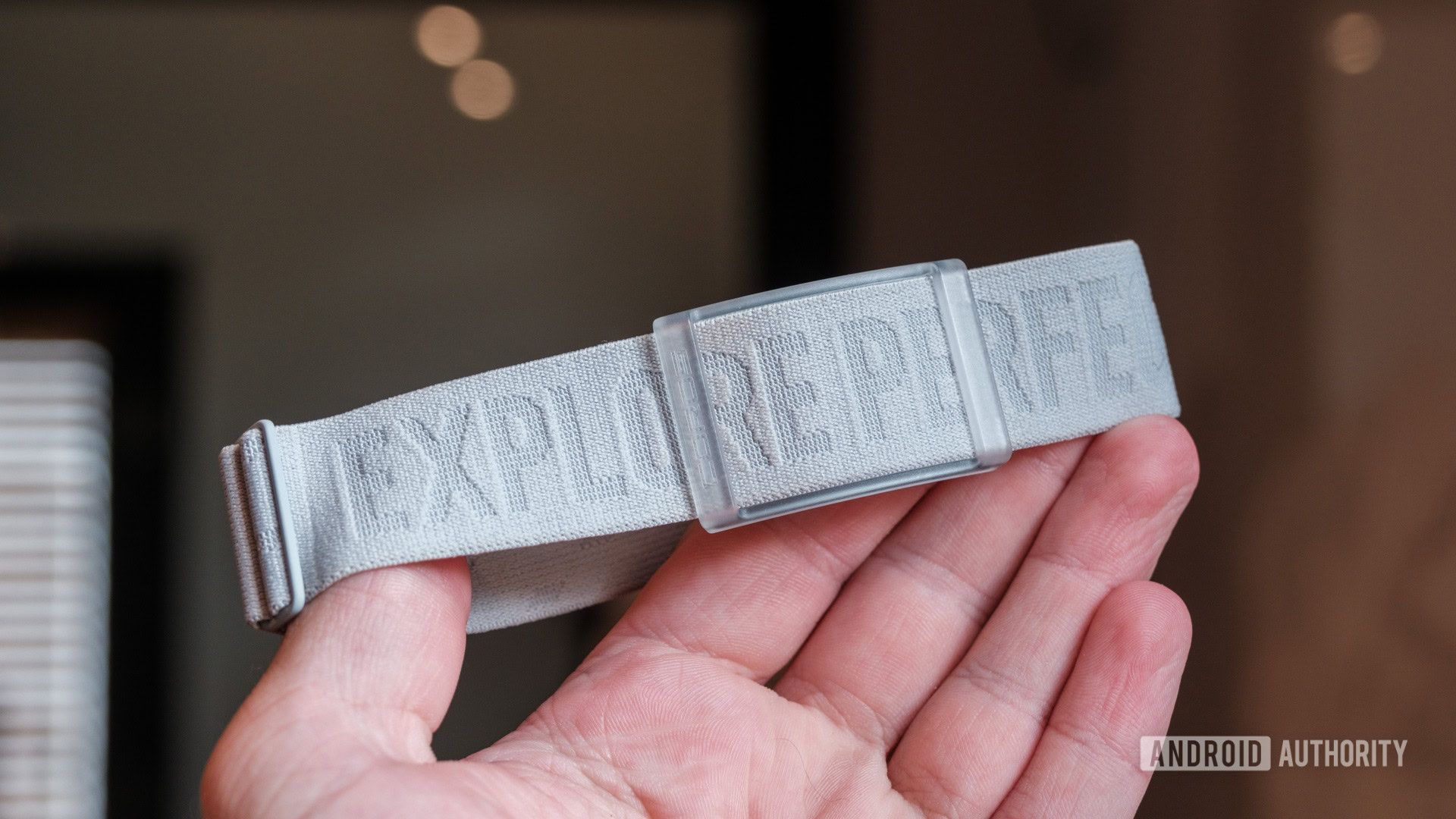
Ryan Haines / Android Authority
As an avid runner, I’m no stranger to heart rate monitors and extra sensors. I’m all about getting every last little piece of data to figure out if I actually nailed my workout or if I pushed just a little bit too hard. Usually, that means slipping on my Polar H10 chest strap, but some days I dread wetting the electrodes (like, all winter long), and it can be a pain to keep the band comfortably in position. Now, I don’t have to worry about that anymore. Coros is challenging Polar with a heart rate monitor of its own, and it’s my new favorite running accessory.
About this article: I tested the Coros Heart Rate Monitor for three weeks. Coros provided the unit, but Coros had no say in the content of the article.
Sun’s out, guns out

Ryan Haines / Android Authority
The best running gadgets are those you don’t have to think about — that’s why I love bone conduction headphones so much. I slip them on and forget they’re there. The Coros Heart Rate Monitor falls into the same category. Unlike the Polar H10 chest strap, for example, which you have to get wet and strap around your torso before you get dressed, you can slip the Coros heart rate monitor on your arm as you head out the door. I can leave it next to my apartment key and grab both as I get ready for my warmup. Maybe I’ll change my tune as the colder weather rolls around, and I have to grab the heart rate monitor before putting on a long-sleeve layer, but simplicity is bliss for now.
Adjusting the Coros heart rate monitor is a breeze, too. It uses a combination of hook and loop and an adjustable buckle, so you only have to size the band once. As far as I can tell, it doesn’t matter how you’re built, either. I’m no John Cena, and I’ve had no problems with the heart rate monitor sliding up or down my arm. You do have to make sure it’s tight on your bicep, but not uncomfortably so. My Polar H10, on the other hand, tries its very best to slip down mid-run, leaving me adjusting when I should be focusing on hitting interval paces.
There’s no room for claustrophobia with Coros’ simple, comfortable bicep band.
The other challenge with Polar’s chest strap design is that it often leaves me feeling claustrophobic. If I size it for my chest when breathing normally, it feels like I’m a watermelon wrapped in rubber bands once I’m breathing heavily. Yet, if I size it to account for my heavier breathing, it’s far too loose when I’m warming up before my main run. There’s no such issue with Coros’ bicep strap. It’s far more comfortable than (and not nearly as tight as) a blood pressure cuff, and you’ll probably forget the heart rate monitor is there unless it’s arm day at the gym.
If there’s one drawback to the bicep positioning of the Coros Heart Rate Monitor, well, it’s the fact that I now have one more weird tan line from running. I have a sock tan, a watch tan, a classic farmer’s tan, and now a pale strip around my right bicep. It’s not a big deal — I’m used to the perils of odd running tans — but it might be something to consider if you like to go sleeveless.
Keep it simple, stupid
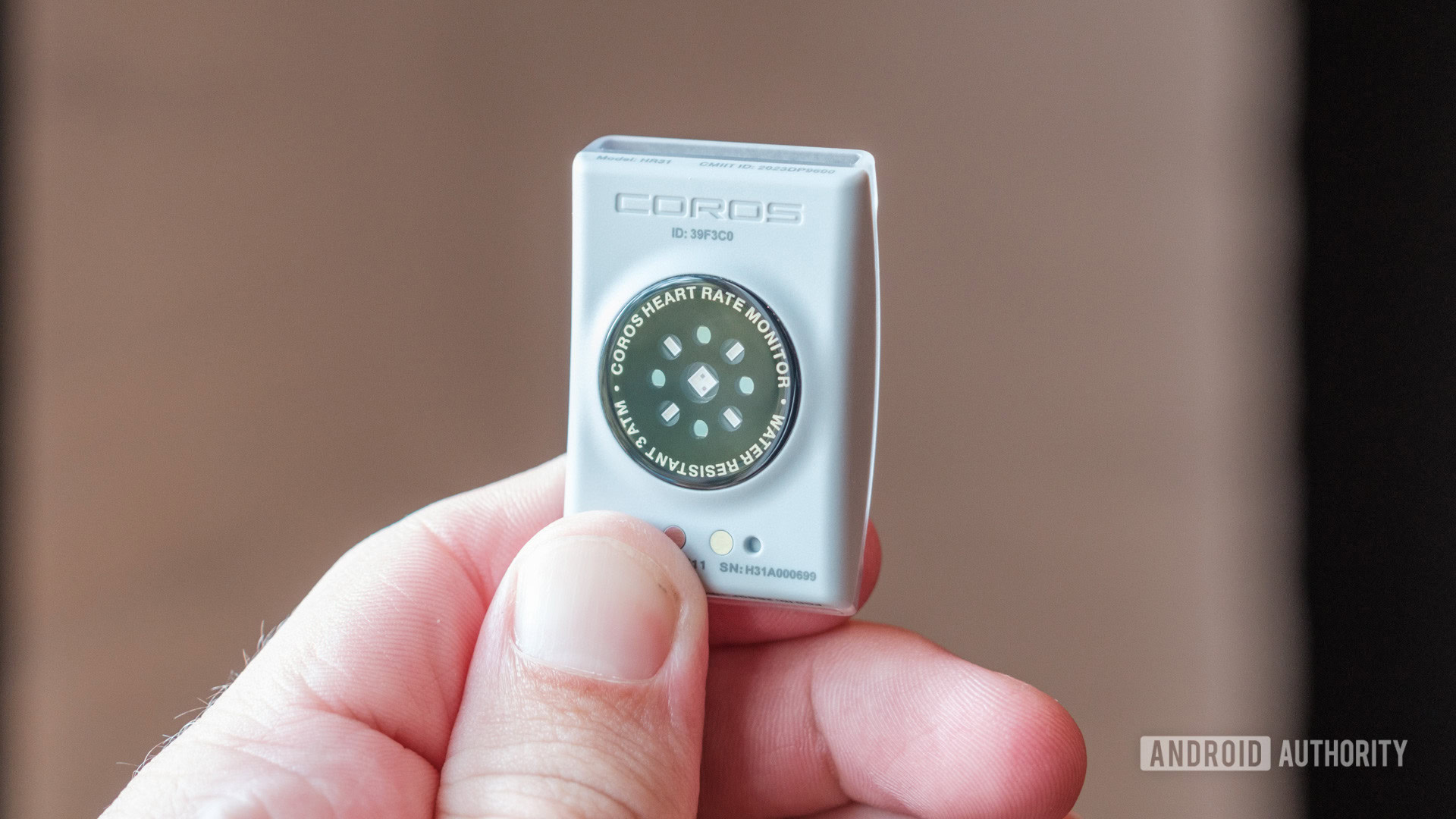
Ryan Haines / Android Authority
Sticking with simplicity, the Coros Heart Rate Monitor doesn’t even have buttons. Instead, it uses automatic wear detection to turn on and off when it senses contact with your skin. Thanks to a small, green LED on the side of the case, you’ll always know when the heart rate monitor is active. The detection is pretty quick, too — I pressed the sensor against my thumb to test it, and the LED lit up after about a second, with the optical heart rate lights following about a second after that.
That’s right, the Coros Heart Rate Monitor is an optical heart rate sensor. Essentially, that means it’s not much different from wearing a Coros or Garmin GPS watch wrapped around your bicep, only this one doesn’t have to worry about tracking your location at the same time. The optical approach isn’t quite as premium as Polar’s ECG-based H10, which uses your heart’s electricity (thus the wetting of electrodes), but most users won’t notice a significant difference.
Coros’ optical sensor is right there with Polar’s ECG-powered H10, but it’s much smaller and lighter.
If you’re trying to keep an eye on your heart rate because you expect an irregularity, you’ll probably want an ECG model, but Coros’ optical sensor is spot-on for watching your heart rate progression through a workout. As a true data nerd, I strapped the Polar H10 around my chest and paired it to my Garmin Forerunner 965 on one wrist, then strapped the Coros Heart Rate Monitor and my Garmin Enduro 2 on the other wrist. Both setups returned almost identical readouts on a nice, easy four-mile effort as I work my way toward a fall race.
One more reminder — you don’t have to get the Coros Heart Rate Monitor wet to make it work. I can’t put into words how much I dread wetting the Polar H10 on a cold winter’s morning, even if I use warm water. Sure, I’ll probably still sweat to the point where a little water doesn’t matter, but it doesn’t make the chill any easier.
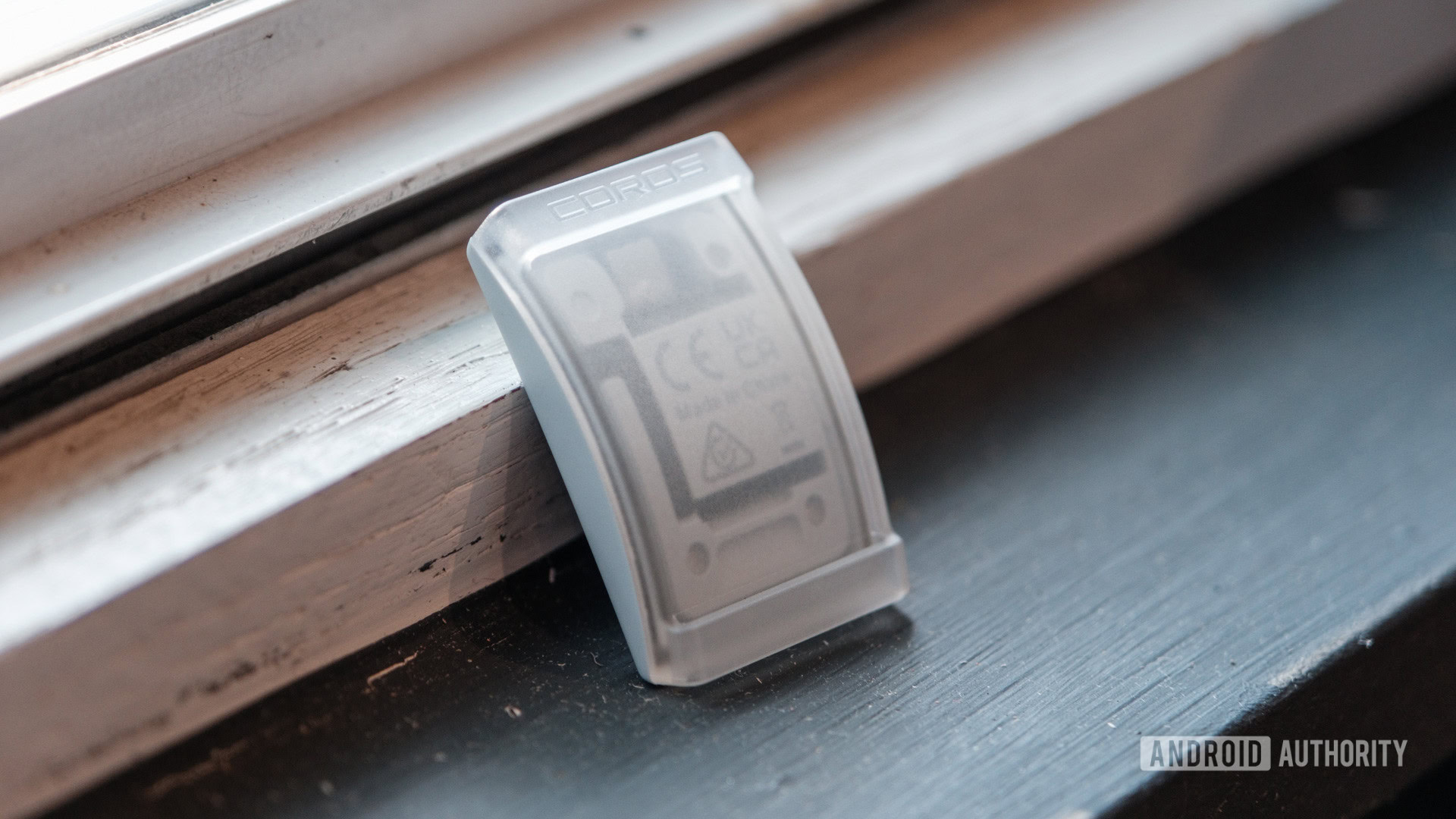
Ryan Haines / Android Authority
Mentioning connections, the Coros Heart Rate Monitor offers just enough options for the well-accessorized runner. It can connect to three devices at once via Bluetooth Smart, meaning that you could set the heart rate monitor up with a GPS watch and Zwift at the same time with room for one more sensor left over. So far, I’ve paired the heart rate monitor to a few different Garmin models with no troubles — just head to the sensors menu on your watch and select it from the list of devices. Unfortunately, Coros picked a chipset without ANT+ capabilities, which may or may not matter to you depending on how many accessories you have, but I didn’t notice any issues when paired with just one GPS watch.
Runnin’, runnin’, and runnin’, runnin’
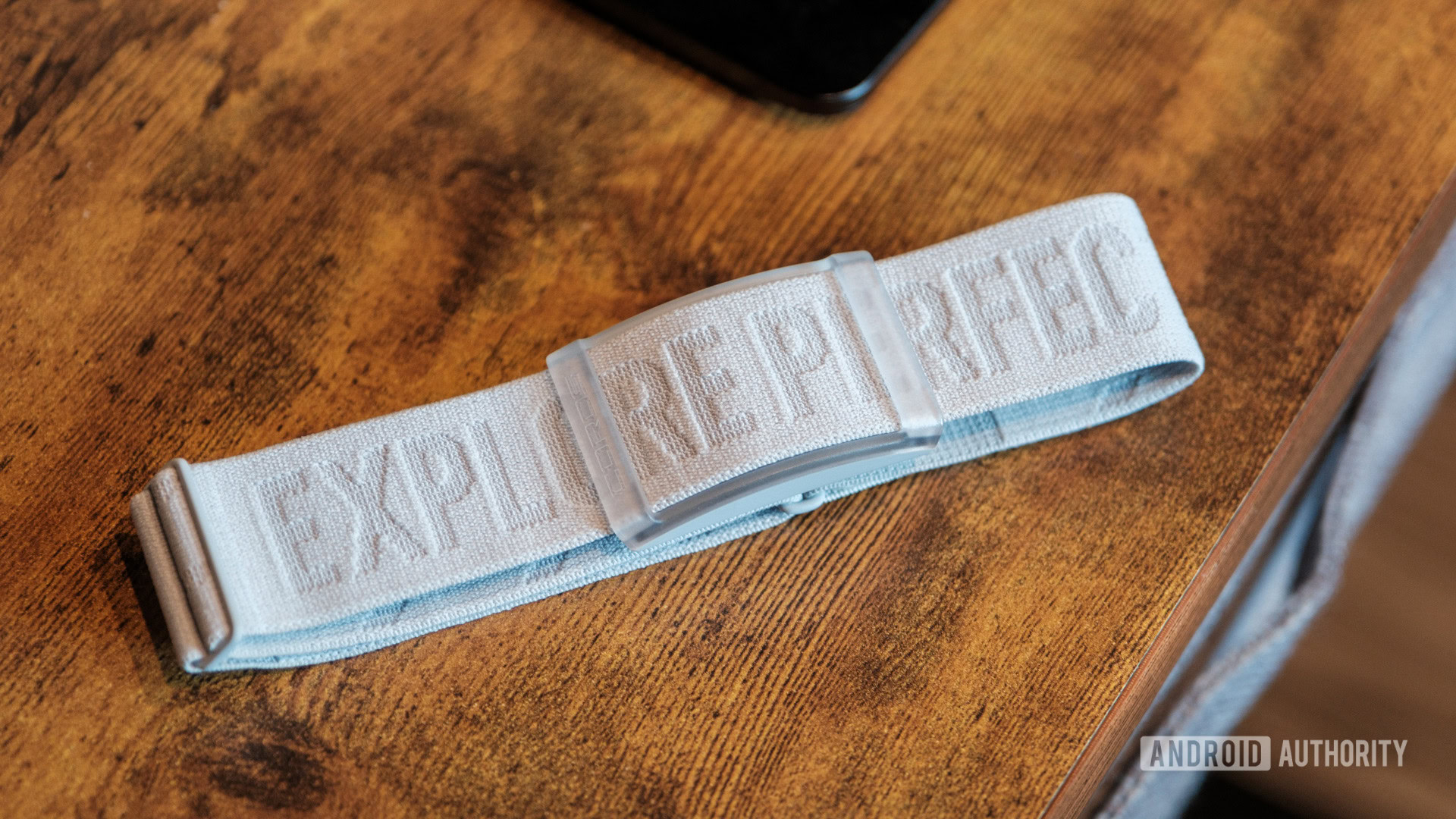
Ryan Haines / Android Authority
Battery life is typically a calling card for Coros, and its heart rate monitor is no exception. In fact, I bought my Coros Pace 2 a few years back simply because it had three weeks of juice at a $200 price point. With the Heart Rate Monitor, Coros claims that you can get about 38 hours of continuous tracking per charge, and, well, I can’t disagree yet. I haven’t touched the included charger outside of a quick charge while setting up the heart rate monitor a few weeks ago. Granted, I haven’t run a total of 38 hours during my time with the strap, but the fewer charges, the better.
What I’m not so thrilled with is the heart rate monitor’s proprietary charging cable. It’s not a surprising decision — most fitness wearables companies have their own connectors — but my headache comes from the fact that it’s not the same cable that Coros uses for its watches. If you’re heading on vacation and worried about battery life for both your heart rate strap and Coros watch, you’ll need two separate cables, both with USB-A connectors. That said, you shouldn’t have to worry about your charge — active or standby — thanks to roughly 80 days of standby time from the monitor. I’d like Coros to pick one cable for all its accessories and stick with it.
A workweek’s worth of battery life more than makes up for the lack of a power button.
The only real drawback to Coros’ buttonless design is, well, there’s no way to turn the Heart Rate Monitor off while still wearing it. If you finish a run and you’re enjoying a coffee with your running buddies, the strap keeps reading until you take it off. It’s again not a problem in the warmer months — slip the Coros Heart Rate Monitor off and hang onto it — but you can bet I’m not fishing it off under a long sleeve shirt when it’s freezing cold outside. We’ll see how much this speeds up the frequency of charging the heart rate monitor, but I’d rather stay warm than fully charged.
At the end of the day, minor quirks aren’t enough to keep me away. I’m happy to deal with a little extra passive battery drain and accuracy almost identical to the Polar H10 if it’s easier to get the heart rate monitor on and off. Coros gets a lot right with its first standalone heart rate monitor, and the fact that you can pair it to just about any old GPS watch makes the simple setup even better.


Coros Heart Rate Monitor
More comfortable than a chest strap • Long-lasting battery life • No-button operation
Coros’ first heart rate monitor is a simple, comfortable bicep tracker for runners and more.
The Coros Heart Rate Monitor is a bicep-based optical heart rate sensor that pairs with up to three devices at a time and offers nearly 40 hours of battery life on a single charge.
Coros Heart Rate Monitor review: FAQs
The Coros Heart Rate Monitor is similar to a fitness tracker that you wear around your arm. It uses the same green light array to measure your pulse, so the tighter you fit the band, the more accurate it will be.
Technically, yes, the Coros Heart Rate Monitor is equipped to detect heart palpitations. However, it must be connected to a smartwatch or other wearable to transmit the data.
Yes, you can connect the Coros Heart Rate Monitor to up to three devices at a time via Bluetooth.
Yes, you can use the Coros Heart Rate Monitor with non-Coros watches like those from Garmin. You can add it through the sensors menu on your watch.


